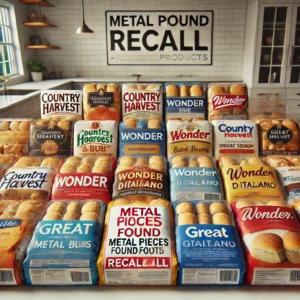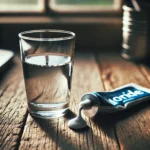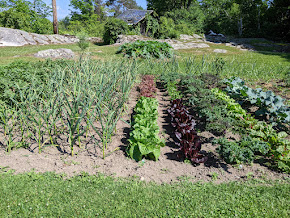Take a walk down any grocery store aisle, and you’ll see just how dependent we’ve become on foreign-made products. From fresh produce to processed foods, much of what lands on our tables isn’t grown, raised, or made here in Canada. But lately, we’ve been getting some harsh reminders of the risks that come with outsourcing our food supply.
The latest wave of food recalls from the Canadian Food Inspection Agency (CFIA) reads like a roll call of imported goods gone wrong. Cheese, chocolate, salt, pepper, sauces, even staple ingredients like eggs, many of these products have been flagged for contamination, undeclared allergens, or even the presence of foreign materials like plastic/steel shavings. That’s right, and if that doesn’t make you rethink what you’re eating, I don’t know what will.
The problem? Too much of our food is coming from places where we have little to no control over how it’s produced . Countries with looser safety regulations, mass-production factories churning out products for the lowest possible cost, and supply chains so tangled that by the time food reaches our plates, who knows where it’s been or what’s in it?
And let’s clear something up… some folks like to point fingers at the U.S., but that’s not where most of these recalls are coming from. These products are being imported from other countries entirely, not from the good old USA. This isn’t about avoiding American goods… it’s about realizing just how globalized and risky our food supply chain has become.
Meanwhile, Canada… one of the most resource-rich nations on the planet… is under-utilizing its own land, farmers, and industries. Instead of investing in local agriculture and food production, we’re increasingly importing things we could be making or growing ourselves. It’s not that we can’t produce high-quality food, we just haven’t made it a priority.
But here’s the real kicker: when we rely on other countries for our essentials, we put ourselves in a vulnerable position. Whether it’s food shortages, supply chain disruptions, or just plain bad products slipping through the cracks, we’re at the mercy of outside forces. And let’s not forget how quickly prices shoot up when we depend too much on imported goods.
So what’s the solution? It’s time for a shift in mindset. Instead of treating imported food as the default, we need to make homegrown products the norm. That means supporting local farmers, buying Canadian-made when possible, and pushing for policies that encourage domestic production rather than offshoring everything in the name of cost-cutting.
If you’ve got space, grow your own food. Hell even a small backyard garden can make a difference. If you can buy from local producers, do it. The more we invest in our own food system, the less we’ll have to worry about what’s coming in from who-knows-where.
Canada is more than capable of feeding itself. The question is? Will we step up and start doing it? Or will we keep rolling the dice with foreign-made food until the next big recall makes us regret it?
Until the next time: Keep Your Minds Open & Your Stories Alive! GW



